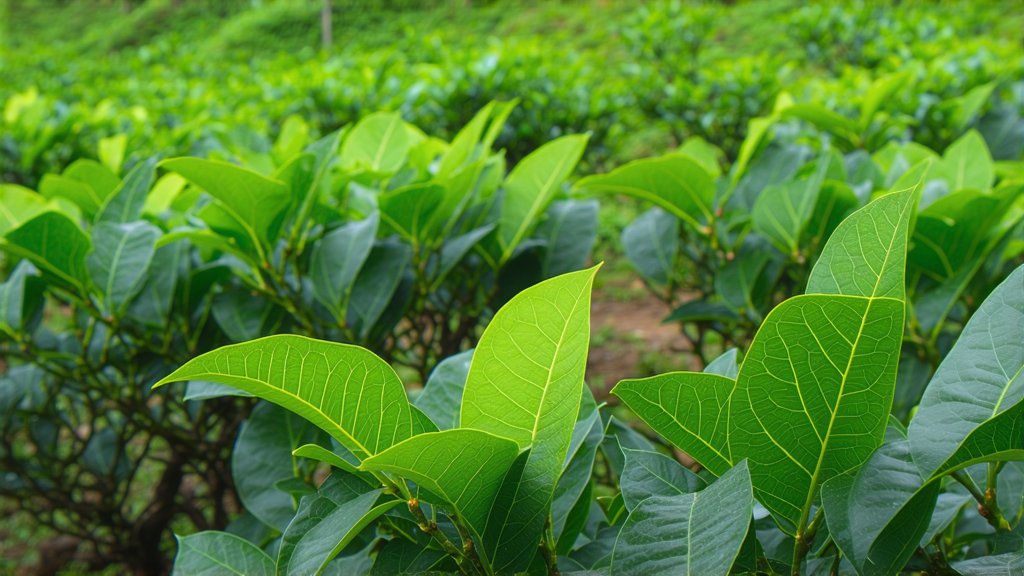
The world of tea is vast and diverse, offering an array of flavors and aromas that cater to every palate. Among the myriad of tea varieties, Da Hong Pao stands out as a quintessential representation of China's rich tea heritage. This article delves into the fascinating history, varieties, production process, and appreciation methods of Da Hong Pao, one of the most revered oolong teas from the Wuyi Mountains.
History of Da Hong Pao
Da Hong Pao, also known as "Big Red Robe," boasts a history that spans over four centuries. According to legend, the tea was discovered by a Ming Dynasty emperor who found relief from a severe illness after drinking this extraordinary brew. As a token of gratitude, he gifted his red robe to cover the tea bushes, thus giving the tea its name. Over the years, Da Hong Pao has evolved from a local specialty to an internationally acclaimed tea, cherished for its unique flavor profile and health benefits.
Varieties of Da Hong Pao
Da Hong Pao comes in several distinct varieties, each with its own characteristics and flavor nuances. The most notable ones include:
-
Original Big Red Robe (母树大红袍): Grown from the original six ancient tea trees, these leaves are extremely rare and expensive. Their flavor is complex, with notes of honey, orchid, and a long-lasting finish.
-
Pure Breed Da Hong Pao (纯种大红袍): Cultivated from cuttings of the original trees, this variety retains much of the original tea's flavor but is more accessible. It offers a balance of floral and fruity notes with a smooth texture.
-
Blended Da Hong Pao (拼配大红袍): Composed of various oolong tea cultivars from the Wuyi Mountains, this blend aims to replicate the flavor profile of the original Da Hong Pao. It provides a harmonious blend of different taste elements, making it a popular choice among tea enthusiasts.
Production Process
The meticulous production process of Da Hong Pao is a testament to the craftsmanship involved in creating this exceptional tea. Here's a step-by-step overview:
-
Harvesting: Only the youngest leaves and buds are handpicked during the spring season when they contain the highest concentration of nutrients and flavors.
-
Withering: The freshly picked leaves are spread out in thin layers to wilt under the sun or in shade, reducing moisture content and softening the leaf structure.
-
Fixation: The withered leaves undergo a brief roasting or steaming process to halt oxidation and fix the green color.
-
Rolling: The fixed leaves are then rolled either manually or mechanically to release juices and shape the leaves.
-
Oxidation: Unlike other oolong teas, Da Hong Pao undergoes minimal oxidation, preserving its vibrant green hue and fresh flavor.
-
Roasting: The leaves are roasted over charcoal fires, imparting a distinctive smoky aroma and flavor characteristic of high-quality oolong teas.
-
Sorting and Grading: After roasting, the leaves are sorted based on quality, size, and appearance before being packaged for sale.
Appreciation Methods
To fully appreciate the depth and complexity of Da Hong Pao, proper brewing techniques and mindful consumption are essential. Here are some guidelines for an optimal tea experience:
-
Teaware: Use Yixing clay teapots or porcelain gaiwans to enhance the tea's flavors. These materials help maintain a consistent temperature and allow the tea's aroma to flourish.
-
Water Quality: Use soft, mineral-rich water heated to around 95°C (203°F). Good water quality significantly impacts the taste of the tea.
-
Leaf-to-Water Ratio: A ratio of approximately 1:50 (tea to water) is recommended. However, adjustments can be made based on personal preference and the specific variety of Da Hong Pao being brewed.
-
Steeping Time: For the first infusion, steep for about 15-30 seconds. Subsequent infusions can be extended gradually, as the leaves open up and reveal their full range of flavors. Typically, Da Hong Pao can be resteeped multiple times, with each infusion revealing new dimensions of taste.
-
Aroma and Taste: Before sipping, take a moment to inhale the fragrant aroma rising from the teapot or cup. Sip slowly, allowing the tea to coat your palate and savor the intricate balance of sweetness, umami, and a slight astringency.
In conclusion, Da Hong Pao is not merely a beverage; it embodies centuries of tradition, artistry, and cultural significance. Its journey from ancient tea bushes to modern tea tables is a testament to the enduring allure of Chinese tea culture. By understanding its history, varieties, production process, and proper appreciation methods, one can truly appreciate the magic encapsulated within each cup of Da Hong Pao. Whether you're a seasoned tea connoisseur or a curious beginner, exploring the world of Da Hong Pao promises a rewarding and enlightening experience.